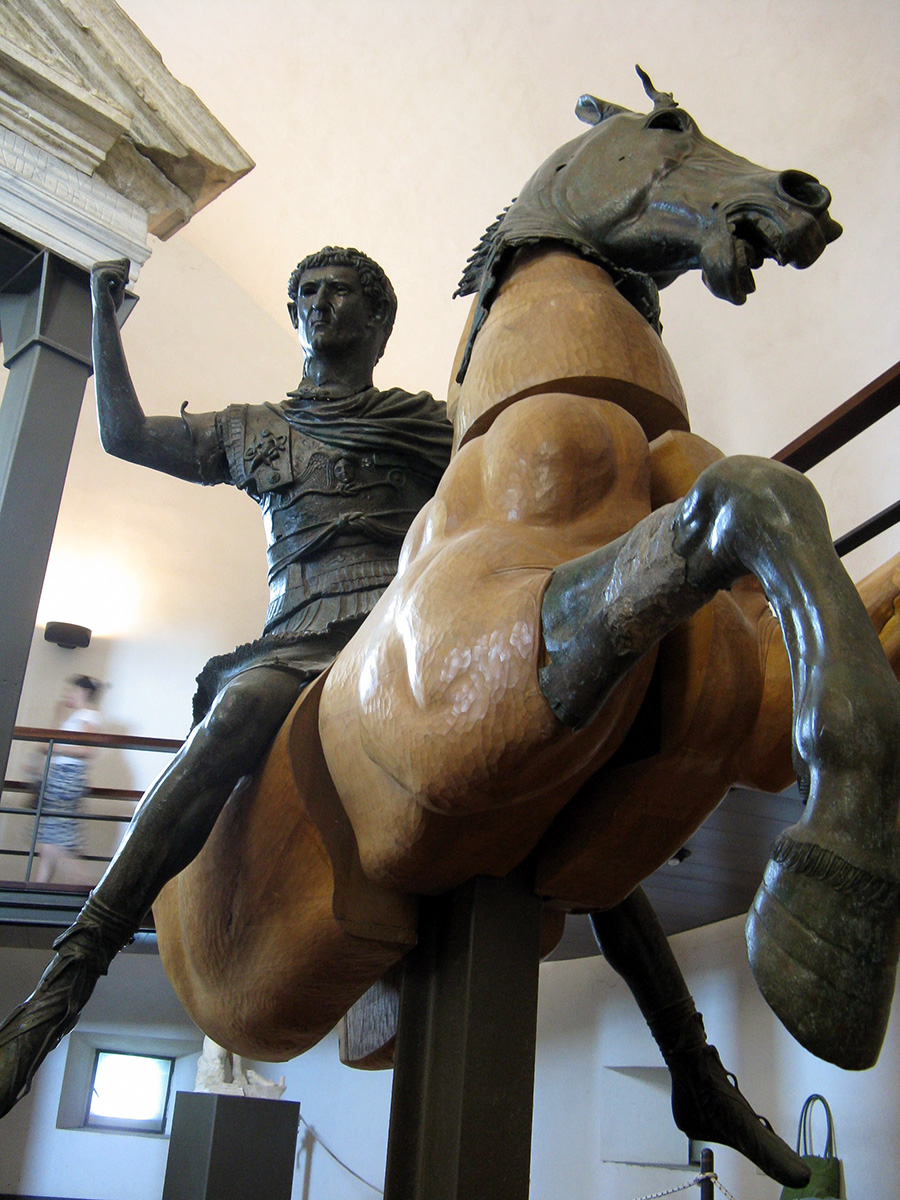
Equestrian statue of Domitian, changed to that of Nerva.
Baiae, Archaeological Museum of Phlegraean Fields
(Baia, Museo Archeologico dei Campi Flegrei).
The Domitianic breastplate, decorated with sea creatures, vegetal motifs, an aegis, and the infant Hercules strangling serpents, was not altered under Nerva. Scholars have posited that these various motifs make general reference to Domitian’s dominance over land and sea and refer specifically to Domitian’s planned offensive against Parthia. In its original form, the statue was probably erected to commemorate the opening of the Via Domitiana that ran through Misenum.
The figure of the rider, although found in pieces, is fully preserved, as is the head of the horse and its forelegs and hind hoof. The group may be distinguished from all other surviving examples of its type by the rearing action of the galloping horse held in check by the emperor who leans backward as he balances the animal’s forward motion. Although the horse’s forelegs were both raised above the ground, it has thus far been conjectured that the emperor was not in the act of trampling a barbarian. Rather, it has been suggested that such a barbarian or the figure of a river god may have ornamented a strut, now missing, beneath the belly of the horse.
© 1992. Description: Diana E. E. Kleiner. Roman sculpture. Yale University Press New Haven & London, 1992. P. 201.